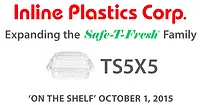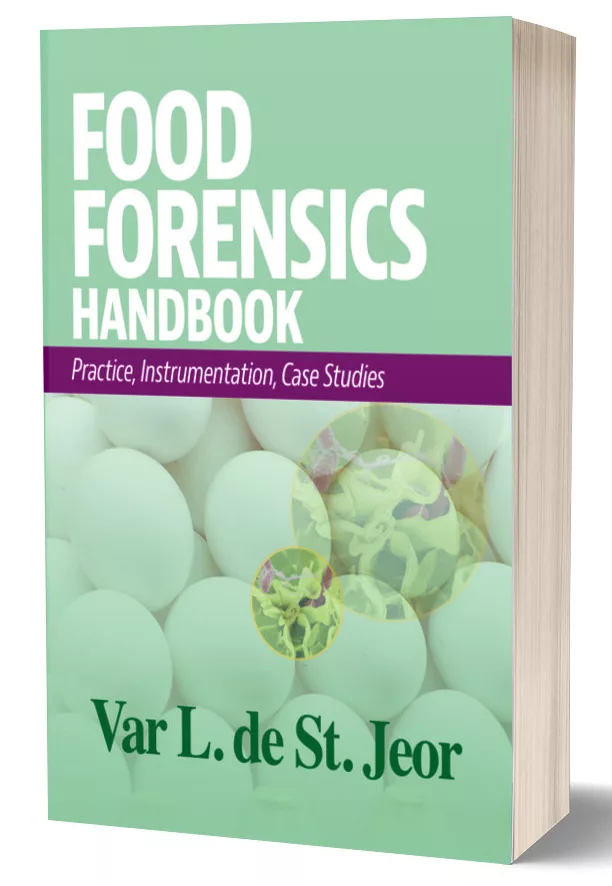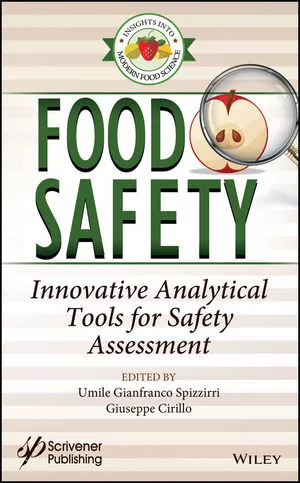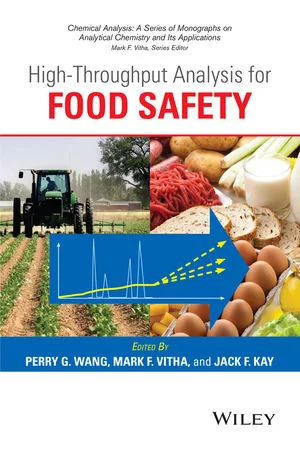Banning Plastics Won’t Prevent Litter: A Case for Promoting Plastics Recycling
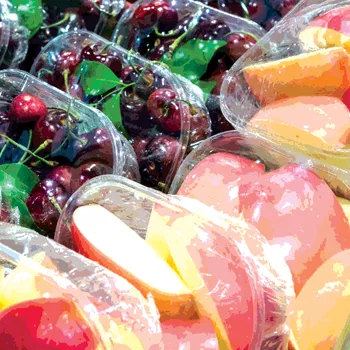
We all want a cleaner environment. The pictures we see of marine litter, trash dumps, and parks spoiled by litter bother all of us—but what are we doing about it? Regulators seem to think that banning plastics is the answer, or at least part of it. But will that really help? Without strong incentives for changing our own behaviors, people tend to look for convenient alternatives to plastics, particularly single-use plastics, and will dispose of those alternatives in a similar way. People who are prone to litter will continue to litter; we will simply be trading one form of trash for another. Perhaps the alternative won’t float and be as visible in marine environments, but it will still be there.
In the food packaging industry, focusing efforts on promoting recycling would seem to be a more effective solution. Regulators could help educate consumers about the safety of recycled plastics for use in food-contact applications and be more responsive to requests from the industry for safety reviews. In many jurisdictions around the globe, regulators and industry groups have issued guidance on safely recycling plastics for food-contact use. Both the U.S. Food and Drug Administration (FDA) and the European Commission have issued guidance in this area, and both have formal mechanisms for reviewing recycled plastics and recycling operations (FDA’s mechanism being voluntary); however, in both of these jurisdictions, as is the case in other parts of the world, the response time for authorities’ handling of requests for reviews is woefully inadequate.
FDA’s System for Evaluating Recycled Plastics for Food-Contact Use
FDA has not promulgated specific regulations for recycled plastics used in contact with food. Rather, recycled plastics must meet the same compositional requirements and specifications their virgin plastic counterparts must meet.[1] These include the requirement that the plastic must be of a suitable purity for its intended use in contact with food.[2] “Suitable purity” means that a food-contact material (FCM) must not transfer any poisonous or deleterious substance that would render the food injurious to health or impart an odor or taste to the food so as to render it unfit for consumption. This raises the question of how to demonstrate suitable purity, particularly in the case of recycled plastics. Here, FDA has issued useful guidance: Guidance for Industry: Use of Recycled Plastics in Food Packaging: Chemistry Considerations,[3] which discusses primary, secondary, and tertiary recycling processes and the potential for chemical contamination of each type of recycled material. It also describes a recommended approach for determining whether a recycling process produces a suitably pure end product for use in food-contact applications.
FDA’s guidance identifies primary recycling as “the recycling of industrial scrap produced during the manufacture of food-contact articles.” Because the source material used in primary recycling has not left the manufacturing facility for consumer use, FDA makes clear that it does not consider this type of recycled material to pose a chemical contamination concern, provided that Good Manufacturing Practices are followed. Secondary and tertiary recycling processes, on the other hand, do involve post-consumer source material. Secondary recycling is the physical reprocessing of plastics; this type of recycling does not alter the basic polymer but instead generally involves washing the plastic source material, then grinding, melting, and reforming it into new plastic articles. Tertiary recycling regenerates purified starting materials through chemical reprocessing and can involve processes such as methanolysis or glycolysis, which result in the production of monomers or oligomers that are then purified and repolymerized.
Because they involve post-consumer plastics, source materials used in either secondary or tertiary recycling processes could potentially contain chemical contaminants as a result of previous treatment. For example, a consumer could decide to make use of an empty plastic water bottle to store pesticides or automotive chemicals in her garage before finally placing it in the recycling bin. This being the case, FDA’s 2006 guidance recommends performing “challenge tests” to evaluate the efficacy of the recycling process. The challenge testing involves exposing virgin plastic of the type that will be recycled to surrogate contaminants that represent common materials (e.g., cleaning solvents, herbicides, and automotive chemicals) that could contaminate post-consumer plastics. The recommended surrogates include a volatile polar organic substance (e.g., chloroform), a volatile nonpolar organic substance (e.g., toluene), a nonvolatile polar organic substance (e.g., benzophenone), a nonvolatile, nonpolar organic substance (e.g., lindane), and a heavy metal salt [e.g., copper(II) 2-ethylhexanoate]. After exposure to the surrogate contaminants under conditions that allow for a sufficient level of uptake, the plastics are then brought through the recycling process of interest, and the resulting recycled material is analyzed for the presence of the contaminants.
Based on the same scientific analysis FDA relied on in promulgating its “Threshold of Regulation” rule, the agency considers an estimated daily intake of a chemical contaminant from recycled food-contact articles to be of negligible risk if it is on the order of 1.5 µg/person/day or less.[4] This rule was adopted in 1995 based on robust scientific support and, since then, many additional studies and papers supporting the “threshold”-type safety analysis and, indeed, supporting much higher threshold safety levels, have been published.[5–7] Consequently, if challenge testing demonstrates that a recycling process removes chemical contaminants such that consumer exposures will be below this safe level, the recycling process may be considered to be sufficient for producing a suitably pure recycled plastic for use in food-contact applications.
FDA does not require recyclers to submit their challenge test data to the agency for review; as mentioned above, there is no regulatory requirement for specific “clearance” of recycling processes or recycled plastics for use in contact with food. Nevertheless, FDA does permit recyclers to submit their data to the agency for review and evaluation on a voluntary basis. The desired result of such an evaluation is an FDA “no objection letter.” (These letters for recycled plastics are available on FDA’s website.) Unfortunately, it can take months or even years to obtain a response to a request for a no-objection letter. This area simply does not seem to be a high priority for the agency. Further, FDA’s guidance on establishing the safety of recycled plastics from a chemical contamination standpoint is now quite dated, particularly given the advances in recycling over the past decade. On the other side of the Atlantic, the European Food Safety Authority (EFSA) has published somewhat more recent guidance on the criteria to be used for the safety evaluation of recycling processes for food-contact plastics;[8,9] however, European authorities are not showing much more progress in assisting recyclers by approving the recycling processes that have been favorably evaluated by EFSA.
The EU System for Regulating Recycled Plastics for Food-Contact Use
Commission Regulation (EC) 282/2008 provides a harmonized measure for regulating recycled plastics produced by secondary recycling throughout the EU.10 This regulation currently applies only to secondary recycling and permits materials made from recycled plastics to be placed on the market in the EU if the recycling process is authorized by the Commission, the recycling process is managed by an appropriate quality assurance system that complies with Commission Regulation 2023/2006 on Good Manufacturing Practices, and if the final product meets the requirements of the EU Plastics Regulation (Commission Regulation 10/2011) and the general safety requirements applicable to all FCMs under the Framework Regulation (Commission Regulation 1935/2004).
The authorization procedure involves a safety review and opinion by EFSA, followed by a decision adopted by the Commission granting or refusing authorization of the recycling process. The submission required to support EFSA’s safety evaluation of a recycling process to ensure that it produces recycled plastics suitable for the intended use in manufacturing FCMs must include information on the source material to show that it complies with the safety requirements of the Framework Regulation, as well as scientific evidence that confirms that the process can reduce any contamination of the plastic input to a concentration that does not pose a risk to human health (this evidence can be in the form of challenge testing). Here again, the concept of a threshold of toxicological concern plays an important role in the evaluation. As noted above, a wealth of data support the appropriateness of this concept in establishing safety.
Regulation 282/2008 also requires a declaration of compliance for recycled plastics used in contact with food; this declaration must state that only recycled plastic from an authorized process has been used, and it must list the EC register number of the authorized recycling process. Here’s the rub: The regulation is over a decade old, but the Commission has yet to authorize any recycling processes even though EFSA has reviewed and issued favorable opinions on the safety of over 150 recycling processes. This long delay in authorizing recycling processes that have been shown to provide recycled plastics safe for food-contact use makes it very difficult for recyclers and other players in the food packaging supply chain to market and use recycled plastics in this area. It presents legal uncertainty and raises questions, unnecessarily, in the minds of the regulated industry and consumers about the safety of recycled plastics.
On the positive side, one Commission official recently indicated that Regulation 282/2008 is expected to be updated in 2020, with a focus on polyethylene terephthalate (PET) recycling operations (the vast majority of the applications for authorizations made thus far relate to PET). The goal is to notify applicants for PET recycling processes of the authorization decisions by the third quarter of 2020 and to publish the first version of the long-awaited register of authorized recycling processes shortly thereafter. Then, the Commission plans to issue a further amendment of the regulation in 2021 to broaden its scope to encompass tertiary recycling operations as well. The Commission official also stated that a possible future amendment to the regulation might expand its scope to encompass other types of FCMs, such as paper.
While these planned actions do provide some hope that the EU authorities are moving forward with some actions that will facilitate the use of recycled plastics in food-contact applications, the extensive delays raise serious questions about the level of commitment the authorities have to this effort. Perhaps it is just simpler for the authorities to ban products? One might consider that the better alternative would be to prioritize efforts to promote the use of safe recycled plastics—it can be done.
References
1. 21 C.F.R. §177.1630; 21 C.F.R. §177.1520.
2. 21 C.F.R. §174.5(a)(2).
3. www.fda.gov/regulatory-information/search-fda-guidance-documents/guidance-industry-use-recycled-plastics-food-packaging-chemistry-considerations.
4. 21 C.F.R. §170.39.
5. Kroes, R, et al. 2004. “Structure-Based Thresholds of Toxicological Concern (TTC): Guidance for Application to Substances Present at Low Levels in the Diet.” Food Chem Toxicol 42:65–83.
6. Munro, IC, et al. 2008. “The Threshold of Toxicological Concern (TTC) in Risk Assessment.” Toxicol Lett 180:151–156.
7. www.efsa.europa.eu/en/efsajournal/pub/5708.
8. EFSA. 2008. “Guidelines on Submission of a Dossier for Safety Evaluation by the EFSA of a Recycling Process to Produce Recycled Plastics Intended to Be Used for Manufacture of Materials and Articles in Contact with Food.” EFSA J 717:1–12.
9. EFSA Panel on Food Contact Materials, Enzymes, Flavourings and Processing Aids. 2011. “Scientific Opinion on the Criteria to Be Used for Safety Evaluation of a Mechanical Recycling Process to Produce Recycled PET Intended to Be Used for Manufacture of Materials and Articles in Contact with Food.” EFSA J 9(7):2184.
10. Commission Regulation (EC) No. 282/2008; Commission Regulation (EC) No. 2023/2006.
Looking for quick answers on food safety topics?
Try Ask FSM, our new smart AI search tool.
Ask FSM →




